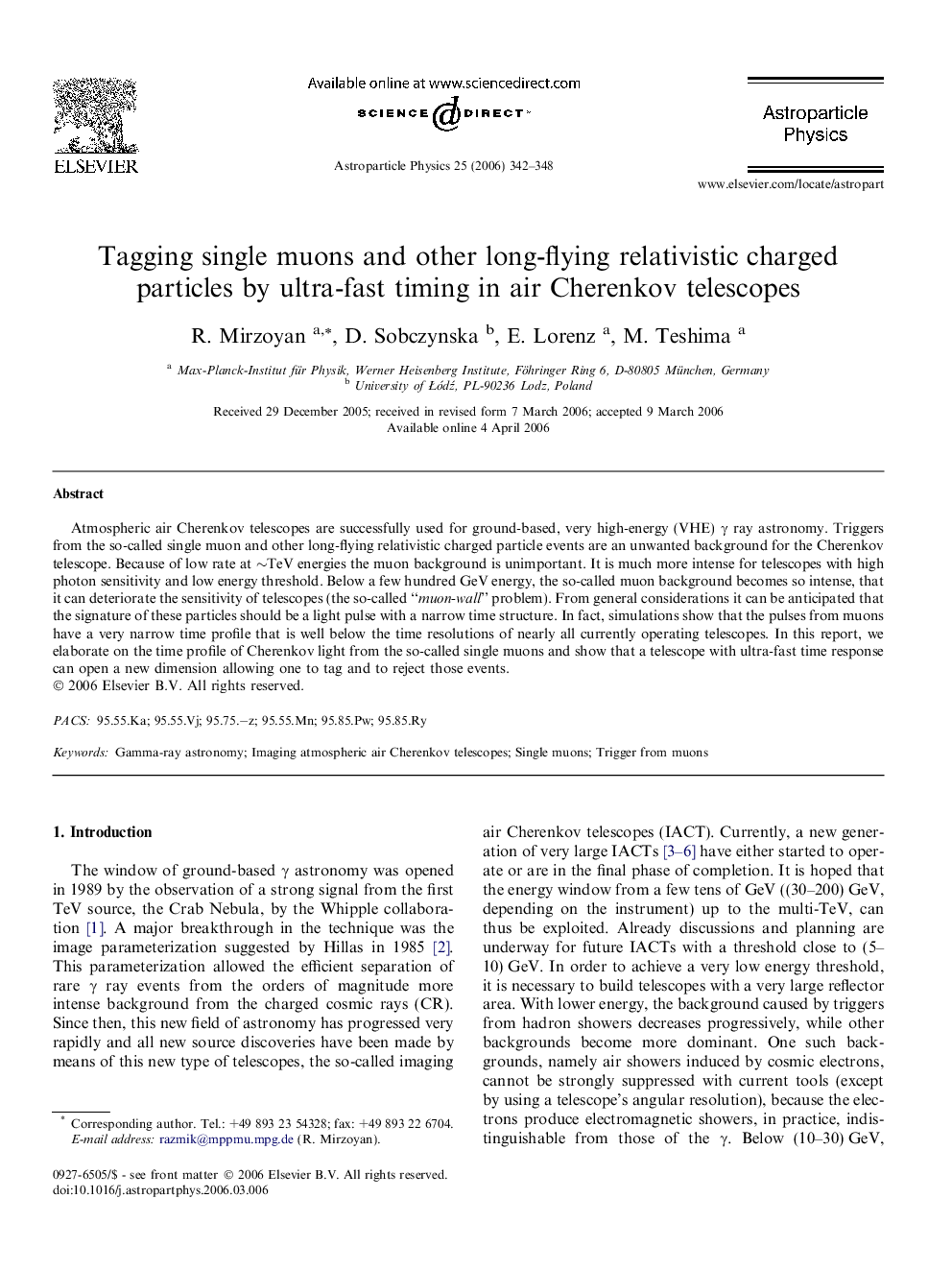| Article ID | Journal | Published Year | Pages | File Type |
|---|---|---|---|---|
| 1771635 | Astroparticle Physics | 2006 | 7 Pages |
Atmospheric air Cherenkov telescopes are successfully used for ground-based, very high-energy (VHE) γ ray astronomy. Triggers from the so-called single muon and other long-flying relativistic charged particle events are an unwanted background for the Cherenkov telescope. Because of low rate at ∼TeV energies the muon background is unimportant. It is much more intense for telescopes with high photon sensitivity and low energy threshold. Below a few hundred GeV energy, the so-called muon background becomes so intense, that it can deteriorate the sensitivity of telescopes (the so-called “muon-wall” problem). From general considerations it can be anticipated that the signature of these particles should be a light pulse with a narrow time structure. In fact, simulations show that the pulses from muons have a very narrow time profile that is well below the time resolutions of nearly all currently operating telescopes. In this report, we elaborate on the time profile of Cherenkov light from the so-called single muons and show that a telescope with ultra-fast time response can open a new dimension allowing one to tag and to reject those events.
